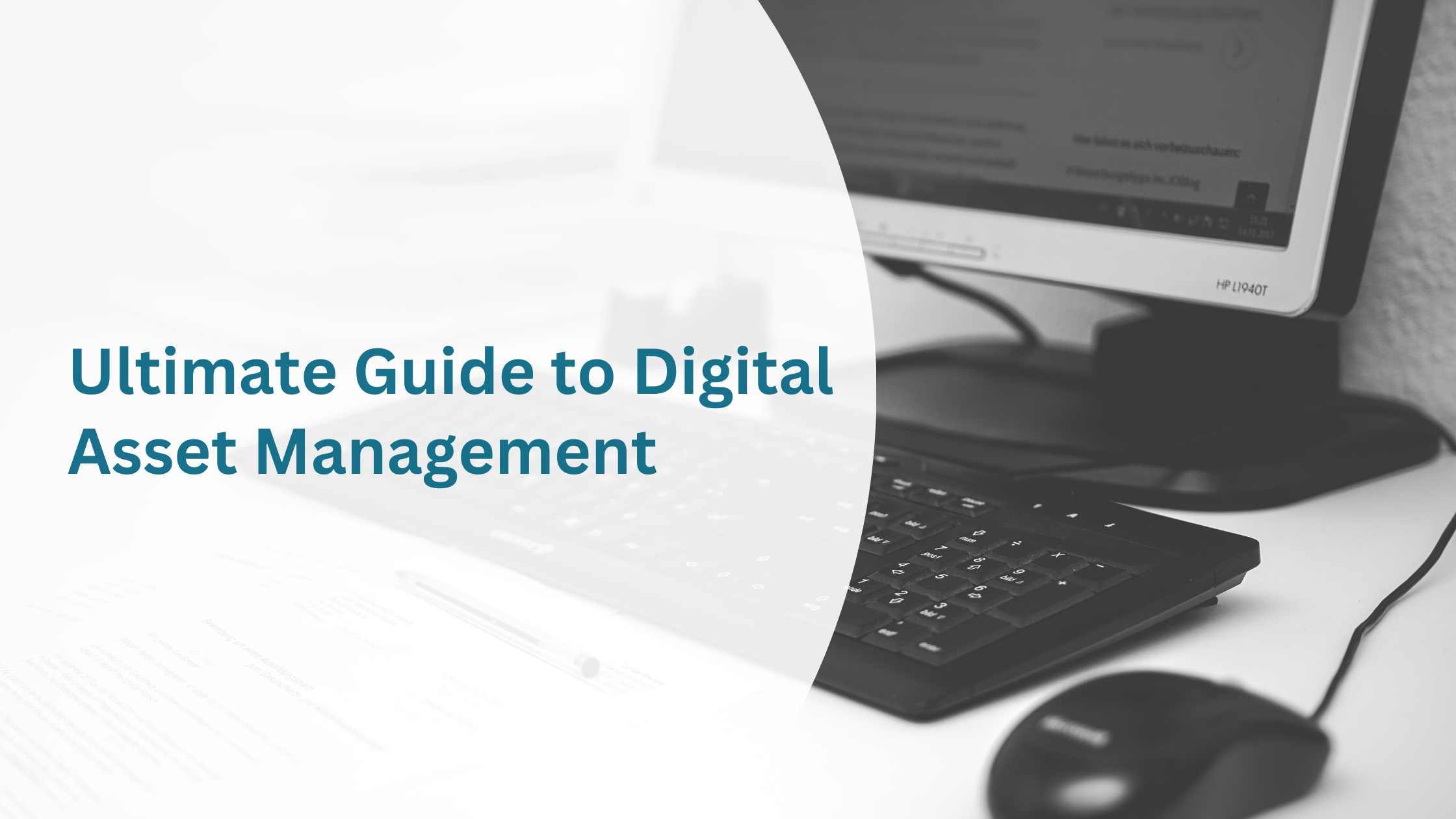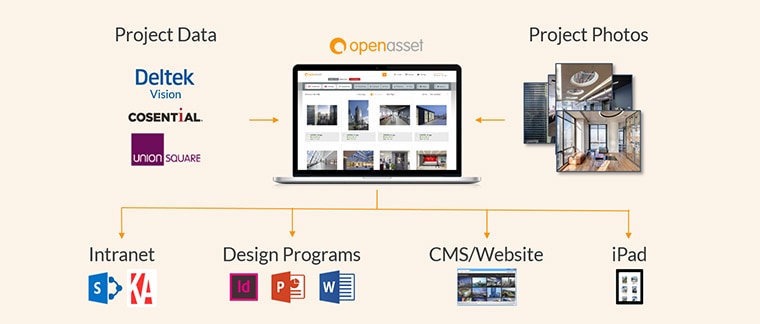Top Construction Bidding Software
Apr 11, 2025
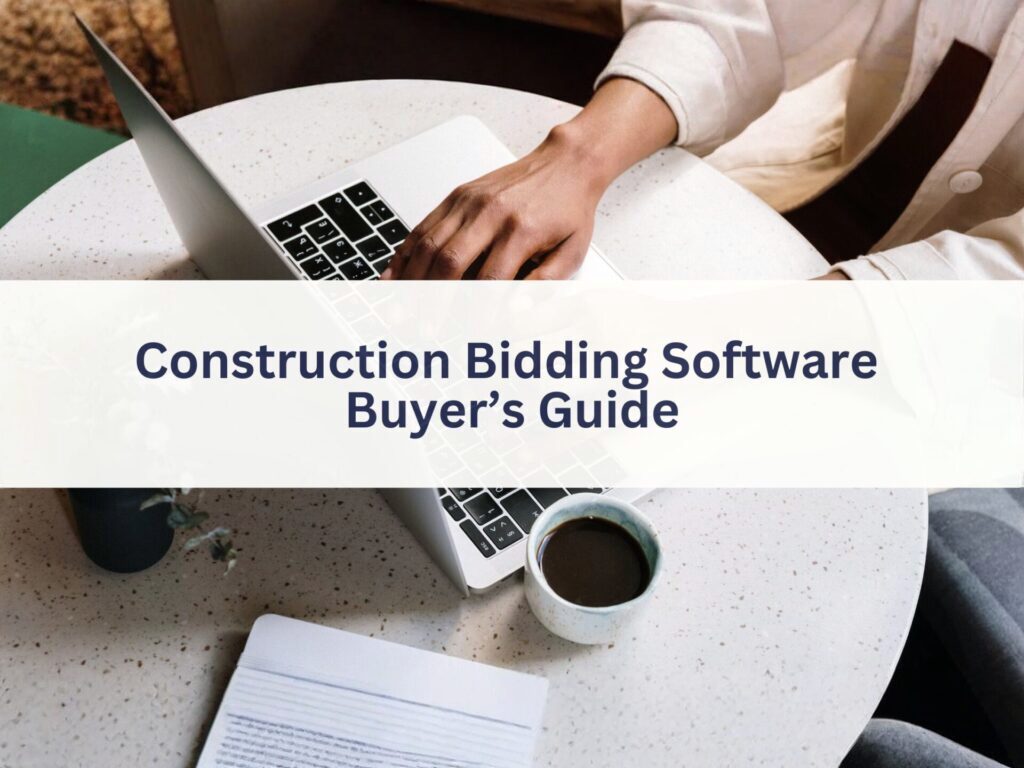
When it comes to landing the right jobs for your construction firm, a solid construction bid is just the beginning—but how you build that bid can make or break the project before it even starts. Spreadsheets, shared drives, and email chains might still get the job done, but they also slow you down, introduce errors, and leave your team scrambling. This is where construction bidding software comes in.
These tools simplify the preconstruction process by giving you one place to build estimates, manage subcontractors, organize bid documents, and collaborate with your team—without the chaos.
In this guide, we’ll walk through everything there is to know about construction, including features to look for, how to choose the right tool for your team, and the 18 best construction bidding software available today.
What Is Construction Bidding Software?
Construction bidding software helps contractors and project teams handle bids faster and more accurately. Instead of juggling spreadsheets, emails, and paperwork, you get one place to estimate costs, manage documents, track submissions, and collaborate with your team. The goal? Make the bidding process smoother, more organized, and way less stressful.
Whether you’re bidding on a small remodel or a major infrastructure project, the right tool keeps everything moving—and keeps you competitive.
What is the Difference Between Construction Bidding Software & Bidding Software Platforms?
It’s easy to mix these two up—they sound similar, but they serve different purposes on the jobsite and behind the scenes. Construction bidding software is built for internal use. It helps contractors manage the entire bidding process from the inside: building estimates, organizing documents, tracking submissions, and keeping the team aligned.
Bidding platforms, on the other hand, are more like digital marketplaces. Project owners post available jobs, and subcontractors or suppliers throw their hats in the ring. It’s all about connecting people to opportunities.
Think of it this way: construction bidding software (like Procore or Buildertrend) helps you prep and submit bids smarter. Bidding platforms (like BuildingConnected or SmartBid) help you find the projects worth bidding on in the first place.
Both tools play important roles, but knowing the difference helps you choose the right solution for your workflow.
The Evolution of the Construction Estimating & Bidding Process
Construction bidding and estimating have come a long way—from pencils and graph paper to cloud-based platforms that connect entire project teams in real time. What used to take days (and a lot of paper) can now happen in minutes with far greater accuracy. Here’s how the construction bidding and estimating process has evolved:
Early Days: Everything by Hand
Back in the day, estimating meant hand-drawn plans, rulers, and hours of number crunching. Subcontractors faxed or phoned in their bids, and estimators tracked it all manually. It worked—but barely. The process was slow, messy, and left plenty of room for mistakes.
The Spreadsheet Era
By the 1980s, spreadsheet software changed the game. Estimators could finally build price models with a little more speed and flexibility. But while the tools improved, adoption didn’t happen overnight. Cost, learning curves, and industry skepticism kept many firms tied to their old ways.
Purpose-Built Estimating Software
Then came software made specifically for construction pros. With built-in features for takeoffs, pricing, and proposals, estimating became more precise—and far less painful. Teams could manage bids more effectively and lay the groundwork for better project planning overall.
Cloud Tools and Connected Systems
Cloud-based estimating tools took it even further. With data stored online, teams could access estimates, make updates, and collaborate without being in the same room—or even the same state. Many platforms now combine estimating with scheduling, reporting, and project management to keep everything running smoothly.
BIM and the Future of Estimating
Looking ahead, Building Information Modeling (BIM) is pushing estimating into the 3D world. With models that combine design and cost data, teams can make faster, more informed decisions before a shovel hits the ground. BIM isn’t just a tool—it’s part of a broader shift toward smarter, more connected construction.
The Importance of an Efficient Construction Bidding Process
Bidding isn’t just about winning construction jobs—it’s about winning the right ones, for the right price, with the right team ready to deliver. An efficient bidding process helps you do exactly that, while also giving your business room to grow smarter.
When things run smoothly, you can respond faster and build more competitive proposals. But more importantly, you have time to evaluate whether a job is a good fit, financially and operationally. That leads to better margins and fewer surprises once the work starts.
Efficiency also lowers your risk. The more dialed-in your process, the easier it is to catch red flags early—vague specs, tight deadlines, unclear permitting. When you spot those issues upfront, your team can address them before they become costly problems mid-project.
And here’s a secret: you don’t have to be the lowest bidder. You just need to be the most prepared. A smarter, faster bidding process lets you pursue high-quality opportunities without overwhelming your team.
This is where tools like Digital Asset Management (DAM) come in. An example of this is OpenAsset, which makes it easy to pull project visuals, staff bios, and firm experience into polished proposals without starting from scratch each time.
With your assets organized and your team finding what they need in seconds, you’re not just bidding—you’re bidding with confidence, clarity, and consistency.
Top Features of Construction Bidding Software
Construction bidding software isn’t just about creating estimates—it’s a full toolkit designed to simplify how contractors manage bids, communicate with teams, and stay ahead of deadlines. Let’s break down the features that make the biggest impact:
Project Management Tools
Beyond tracking tasks, project management features in bidding software help teams see the bigger picture. You can map out the entire project lifecycle—from pre-construction planning to closeout—and keep everything aligned with timelines, budgets, and scope.
Having this visibility early in the bidding phase means you can spot risks, allocate resources smarter, and build a bid around a realistic execution plan.
Cost Estimation Capabilities
A solid bid starts with a solid estimate. Estimation tools pull in real-time data on labor, materials, and equipment so you’re not guessing—you’re quoting with confidence.
Many platforms also let you reuse templates and historical cost data, which not only speeds things up but improves consistency across bids. Accurate estimates can be the difference between winning the job and losing it later.
Document Management
Keeping all your bid documents in one place saves more time (and headaches) than you might think. From blueprints and specs to contracts and RFPs, document management tools let your team store, organize, and access everything securely.
Plus, with version control, everyone’s working off the same file, which cuts down on confusion and costly mistakes.
Collaboration and Communication Tools
Bidding involves a lot of back-and-forth, and email chains just don’t cut it anymore. Built-in messaging, tagging, and real-time notifications keep your internal team and external partners in sync.
Whether you’re asking for a clarifying detail from the architect or looping in a subcontractor for pricing, communication happens faster and more transparently.
Bid Tracking
With multiple bids in play, it’s easy to lose track of what’s been submitted, what’s in progress, and what needs follow-up.
Bid tracking tools give you a bird’s-eye view of everything in your pipeline. You can prioritize deadlines, flag bids that need attention, and analyze your win/loss rates to refine your strategy over time.
Subcontractor Management
Managing subcontractors goes beyond contact info. The best platforms let you evaluate qualifications, track past performance, and invite the right trades to bid based on scope and location.
You can communicate directly, request pricing, and even compare proposals side by side. It’s a faster, smarter way to build your bench of reliable partners—and deliver stronger bids.
How to Choose the Right Construction Bidding and Estimating Software
Finding the right software isn’t just about ticking boxes on a feature list—it’s about choosing a tool that fits your team, your workflow, and the way you do business. Here’s what to keep in mind as you evaluate your options:
Consider Pricing and Costs
Let’s be honest—budget matters. Some tools charge monthly per user, others have flat rates or charge extra for advanced features.
Look beyond the sticker price and think about what’s included. Are updates and support included? Will you pay more as your team grows? The right solution balances cost with long-term value.
Read User Feedback and Reviews
No one knows a platform better than the people using it daily. Before you commit, dig into user reviews to see how the software performs in the field.
Are teams actually getting support when they need it? Do features work the way they’re supposed to? Real-world feedback can reveal red flags—or green flags—you won’t find on a sales page.
Look for Must-Have Features
Not all platforms are created equal. Make sure the tool you choose offers:
- Scalability: Whether taking on five projects or fifty, your software should keep up without slowing down.
- Customizability and Flexibility: Every firm has its own rhythm. Choose a platform that molds to your workflow, not the other way around.
- Ease of Use: If your team dreads logging in, the software’s not doing its job. Look for an interface that’s clean, intuitive, and easy to navigate.
Ensure Seamless Integration
Your software shouldn’t work in a silo. A good bidding platform connects seamlessly with your estimating, accounting, and project management tools. Fewer manual exports, fewer data entry mistakes, and way more time saved.
Evaluate Customer Support
Even the best tools hit bumps. When they do, solid support makes all the difference. Look for quick response times, helpful resources, and onboarding that gets your team up to speed without the headache. Because waiting days for a reply with a deadline approaching? Not ideal.
Match Your Business and Industry Needs
What works for a national general contractor might not suit a local residential builder. Therefore, your firm’s size and the complexity of your projects should influence your software choice.
Think about your team size, typical project scope, and any niche needs—whether compliance requirements, specific trades, or fast-paced bid timelines. The right fit should feel tailored, not one-size-fits-all.
Best Construction Bidding Software
Now, let’s take a deep dive into the best bidding software for construction out there right now.
1. Procore
All-in-one construction management platform.
Procore is a leading all-in-one construction management platform that supports every phase of the building lifecycle—from preconstruction through closeout. It’s especially well-suited for mid-size to enterprise-level general contractors, construction managers, and specialty contractors looking to centralize operations. The bidding module allows teams to manage bid packages, track subcontractor responses, and streamline communication in real-time. Because it’s cloud-based, project data stays accessible and up-to-date, no matter where your team is working.
Top Features
- Centralized bid management and subcontractor communications
- Integrated document control with version tracking
- Seamless connection with project financials, RFIs, and submittals
Pros
- Built for teams managing multiple, complex projects
- Strong mobile app for field access and updates
- Scalable for companies of all sizes, with a growing ecosystem of integrations
Cons
- Higher price point than many competitors, especially for smaller firms
- Learning curve for new users due to the depth of features
- The bidding tool isn’t as advanced as specialized estimating platforms
Pricing
Procore pricing is based on annual construction volume and the modules selected. While Procore doesn’t list fixed prices, estimates suggest base plans start around $375/month with customized pricing for larger organizations.

2. STACK
Cloud-based takeoff and estimating software.
STACK is a cloud-based preconstruction platform that combines fast, accurate takeoff tools with robust estimating capabilities. Designed for both general contractors and subcontractors, STACK helps teams reduce manual work, standardize proposals, and win more bids. Because it’s browser-based, you can collaborate in real-time from anywhere—ideal for distributed estimating teams or firms working on high bid volume.
Top Features
- Lightning-fast digital takeoff tools with drag-and-drop measurement
- Prebuilt material and labor cost databases
- Real-time collaboration with team permissions
Pros
- Intuitive user interface with minimal training required
- Available free version for small teams
- Strong reporting and proposal generation tools
Cons
- Pricing may be steep for small teams needing multiple licenses
- No built-in project management tools—purely preconstruction focused
- Some advanced features require higher-tier plans
- Occasional syncing delays with third-party integrations
Pricing
STACK offers a free trial. STACK paid plans for their Takeoff & Estimate subscriptions start at $2,199/year per user for large estimating teams (3+ users), with multi-user team pricing available upon request.
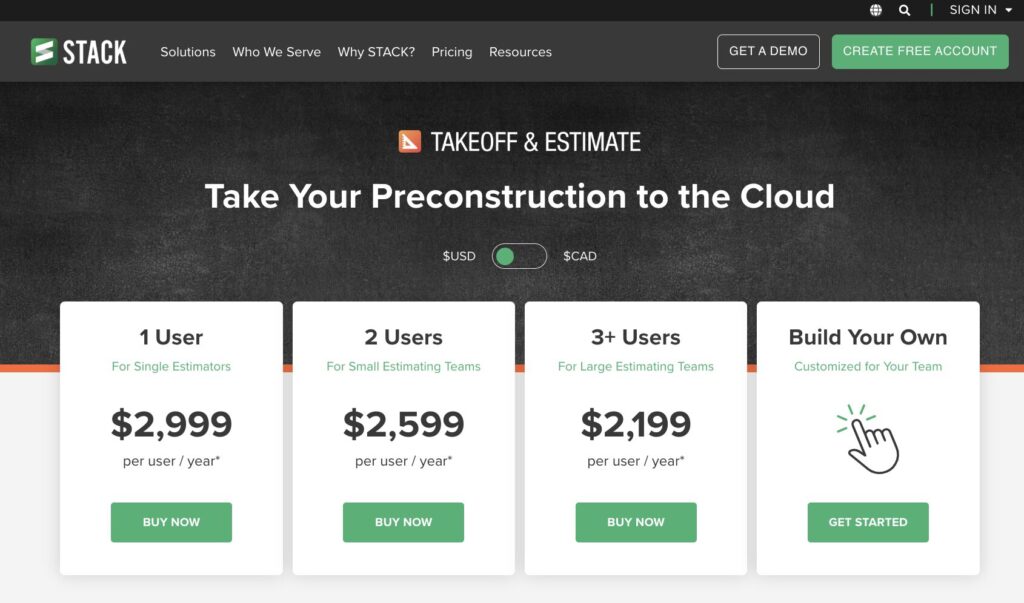
3. B2W Estimate
Specialized estimating for heavy civil construction.
B2W Estimate is a powerhouse bidding and estimating tool built specifically for heavy civil construction professionals. It supports highly detailed cost structures, crew-based estimates, and real-time performance tracking. The platform integrates with the broader B2W suite, which includes scheduling, tracking, and equipment management, making it a natural fit for contractors managing infrastructure or large-scale public works projects.
Top Features
- Item-based and crew-based cost estimating
- Centralized cost structure library with bid history
- Integration with field tracking and equipment modules
Pros
- Tailored for heavy civil contractors, DOT projects, and large public bids
- Reduces errors with built-in logic and standardized costing
- Enables collaboration across estimators, managers, and field teams
Cons
- Targeted at heavy civil contractors—may be overkill for smaller projects
- Requires upfront training to master advanced cost structures
- Interface feels dated compared to modern cloud platforms
- Cloud access is limited unless paired with other B2W tools
Pricing
B2W provides custom pricing based on company size, number of users, and desired integrations. Contact the B2W team directly for a tailored quote.
4. BuilderTrend
Construction management software for home builders and remodelers.
Buildertrend is a comprehensive construction management platform tailored for home builders, remodelers, and specialty contractors. It offers tools for project scheduling, budgeting, client communication, and document management, all within a user-friendly interface. Buildertrend’s cloud-based system ensures teams can collaborate in real-time, whether in the office or on the job site. Its mobile app further enhances accessibility, allowing for updates and communication on the go.
Top Features
- Project scheduling with Gantt charts and calendar views
- Budgeting and financial tracking tools
- Client portal for selections, approvals, and messaging
- Document and photo storage with version control
- Integrated to-do lists and daily logs
Pros
- Intuitive interface suitable for teams of all tech levels
- Robust client communication features enhance transparency
- Mobile app ensures project updates can be made from anywhere
- Regular updates and customer support keep the platform evolving
Cons
- Can feel bloated for users who only need estimating features
- Mobile app occasionally lags on low-bandwidth connections
- Some users report that client-side features are overwhelming
- Learning curve for customizing templates and reports
Pricing
Buildertrend offers tiered pricing based on features and company size. Plans start at $399/month, with additional tiers providing more advanced functionalities. A free trial is available to test the platform’s capabilities.

5. ProEst
Cloud-based estimating software with CRM integration.
ProEst is a cloud-based estimating software for general contractors, subcontractors, and construction managers. It streamlines the estimating process by integrating digital takeoffs, cost databases, and proposal generation into a single platform. ProEst’s real-time collaboration features allow teams to work together efficiently, reducing errors and improving bid accuracy. Its integration with project management tools ensures a seamless transition from preconstruction to execution.
Top Features
- Digital takeoff tools with drag-and-drop functionality
- Preloaded cost databases with regional pricing
- Customizable proposal templates
- Real-time collaboration and cloud storage
- Integration with project management and accounting software
Pros
- Centralized estimating processes reduce the need for multiple tools
- Cloud-based system allows for remote access and collaboration
- Customizable templates streamline proposal creation
- Integration capabilities enhance workflow efficiency
Cons
- Works best when paired with other platforms like Procore
- No built-in takeoff tool as robust as standalone software
- Can be pricey depending on team size and setup
- Some users find the interface less intuitive for beginners
Pricing
ProEst offers customized pricing based on company size and specific needs. Interested users should contact ProEst directly for a tailored quote or a demo.
6. PlanSwift
Desktop-based takeoff and estimating tool.
PlanSwift is a desktop-based takeoff and estimating software popular among contractors who prefer a hands-on approach to bid preparation. It allows users to perform digital takeoffs directly on electronic plans, with tools to measure, count, and calculate materials and labor. PlanSwift’s customizable assemblies and plugins cater to various trades, making it a versatile choice for different construction professionals.
Top Features
- Point-and-click measurement tools for accurate takeoffs
- Customizable assemblies for different trades
- Integration with Excel for data export
- Plugin support for extended functionalities
- One-time purchase model with optional maintenance plans
Pros
- User-friendly interface suitable for quick adoption
- Flexible customization options for various construction needs
- Offline access ensures functionality without internet
- Cost-effective for small to mid-sized contractors
Cons
- Desktop-based—no native cloud or browser functionality
- Not ideal for collaboration across multiple users
- Limited support unless you purchase an annual plan
- Interface and visual design are due for a modern update
Pricing
PlanSwift’s annual subscription is available for $2,000, with optional annual maintenance plans for updates and support. A free trial is available for users to explore its features.
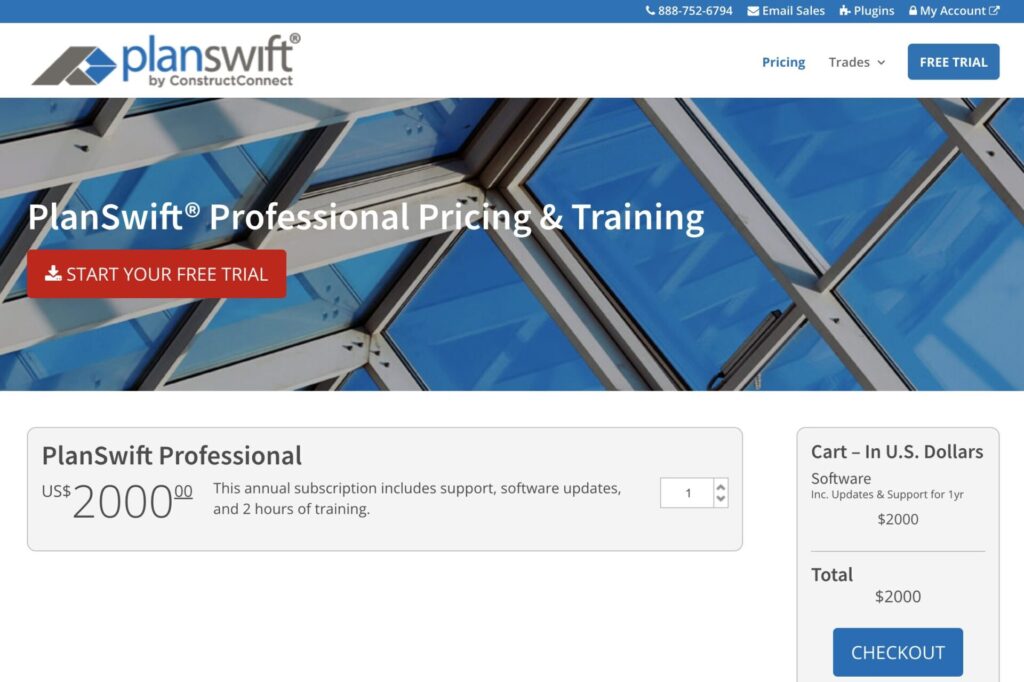
7. SmartBid
Construction bid management software for general contractors.
SmartBid is a cloud-based construction bid management software built specifically for general contractors who need to prequalify subcontractors, manage bid invites, and track proposals all in one place. Developed by ConstructConnect, it focuses on streamlining the preconstruction workflow, especially for GCs juggling multiple trades and tight bid deadlines. Its user-friendly interface and subcontractor communication tools make it a strong choice for mid-size to large construction firms.
Top Features
- Subcontractor prequalification and database management
- Bid package creation, distribution, and tracking
- Document sharing and version control
- Customizable bid forms and automated reminders
- Integration with ConstructConnect’s project leads platform
Pros
- Streamlines communication with large subcontractor networks
- Easy-to-use dashboard with robust reporting tools
- Improves bid response rates with automated notifications
- Strong security and user access controls
Cons
- Best suited for GCs—subcontractors may prefer more open platforms
- No built-in cost estimation or takeoff tools
- Reporting customization can feel limited for complex needs
Pricing
SmartBid pricing is customized based on company size and volume of use. Contact the sales team directly for a quote or request a free demo.
8. Sage Estimating
Advanced estimating integrated with accounting systems.
Sage Estimating is a powerful, data-driven estimating solution designed for firms already using Sage construction accounting software. Known for its detailed cost tracking and integration capabilities, Sage Estimating helps contractors generate accurate bids with confidence. It’s best suited for larger firms or those working on complex, multi-phase jobs where deep financial insight is essential.
Top Features
- Detailed cost database integration with live pricing
- Assembly-based estimating for faster takeoffs
- Seamless integration with Sage 100 Contractor and Sage 300 CRE
- Customizable templates and reports
- Add-ons for BIM, scheduling, and project management
Pros
- Excellent for companies already using Sage’s accounting ecosystem
- Reduces estimating errors with standardized cost structures
- Scalable for growing firms with large estimating teams
- Strong audit trail and traceability for all cost inputs
Cons
- Learning curve is steeper than on more intuitive platforms
- Desktop-based, though some cloud functionality is available
- May feel overly complex for small or residential contractors
Pricing
Sage Estimating pricing varies depending on modules and deployment. Expect to pay between $2,000 and $4,000 per user (one-time license) plus additional fees for support, training, and integrations.
9. CoConstruct
Project management software for custom home builders.
CoConstruct is a popular construction management platform built for custom home builders and remodelers. It combines estimating, scheduling, selections, change orders, and client communication into a single, easy-to-use interface. With web and mobile access, CoConstruct simplifies everything from the sales process to final walkthroughs, making it especially useful for design-build firms and smaller teams that wear multiple hats.
Top Features
- Estimate builder with template-based costing
- Budget tracking and change order management
- Client portal for approvals, messages, and selections
- Scheduling with calendar and Gantt chart views
- Seamless integration with QuickBooks
Pros
- Specifically for custom builders and remodelers
- Strong client communication tools (email, messaging, selections)
- Improves change order clarity and payment tracking
- Mobile app supports field updates and photo uploads
Cons
- Not ideal for commercial or heavy civil projects
- Limited customization for larger, more complex operations
- Some users report lag in mobile performance on older devices
Pricing
According to G2, CoConstruct starts at $99/month for basic features, with advanced tiers available based on the number of projects. They also offer a 30-day money-back guarantee.
10. HCSS HeavyBid
Estimating software for infrastructure contractors.
HCSS HeavyBid is a high-powered estimating tool made for infrastructure, heavy civil, and utility contractors. It’s designed to handle complex bid structures, repetitive work types, and detailed crew-based estimating. With features like DOT import functionality and integration with scheduling and field tracking tools, it’s a go-to for contractors working on public works, highways, bridges, and large-scale earthwork projects.
Top Features
- Crew- and resource-based estimating with cost history tracking
- DOT bid item import and export support
- Bid comparison and alternate scenario analysis
- Integration with HCSS HeavyJob, Equipment360, and accounting systems
- Proposal generation with customizable formats
Pros
- Built for the complexity of heavy civil bids
- Supports extremely detailed estimating workflows
- Widely used and trusted in the infrastructure sector
- Offers strong training and implementation support
Cons
- Has a steep learning curve for new users
- Interface can feel dated compared to newer cloud tools
- Pricing is on the higher end, and best suited for large firms
Pricing
HCSS pricing is customized and not publicly listed. Expect to pay a premium for robust features and implementation, especially for multi-user environments. Contact HCSS for a quote.
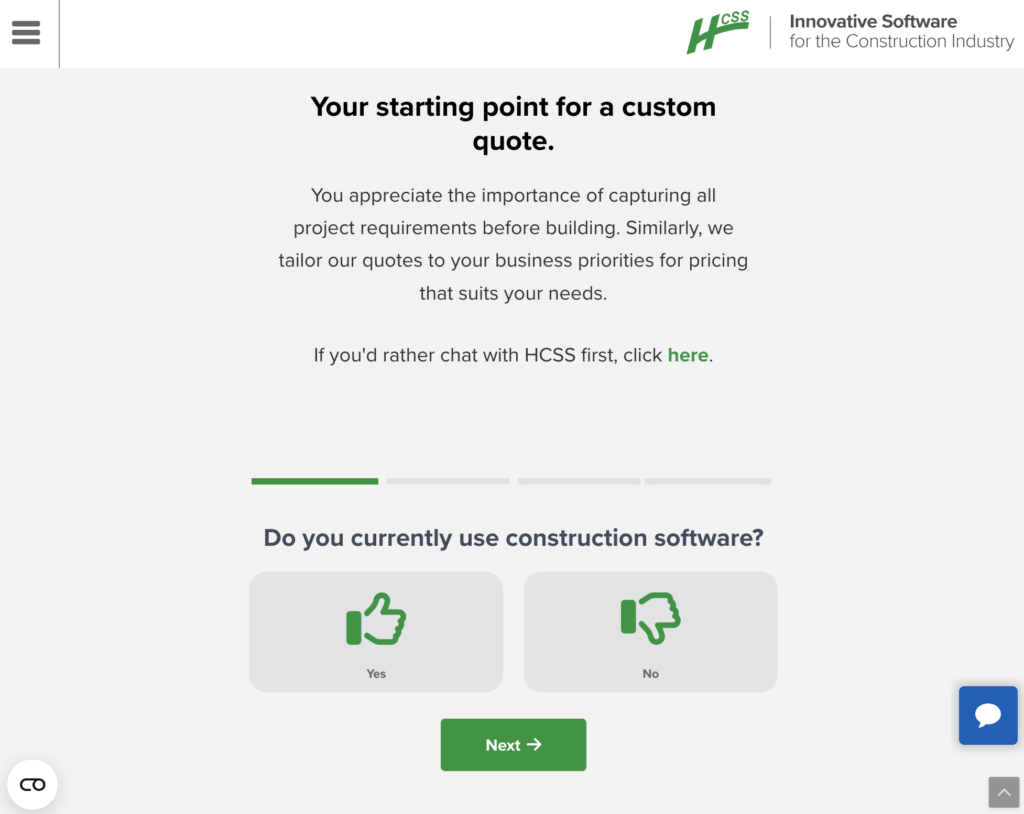
11. Clear Estimates
Estimating software for residential contractors.
Clear Estimates is a straightforward estimating solution built with residential remodelers and small contractors in mind. It combines a user-friendly interface with preloaded templates and cost data from RemodelMAX. It’s a great fit for solo contractors or small teams who want to get accurate bids out quickly, without spending hours building templates from scratch.
Top Features
- Prebuilt templates tailored to remodeling and homebuilding
- Integrated cost data by RemodelMAX (adjusted for zip code)
- Proposal and estimate generation with client-ready formatting
- Seamless QuickBooks integration
- Web-based access with no downloads required
Pros
- Super easy to learn and start using right away
- Perfect for remodelers, handymen, and small GCs
- Fast estimate creation with minimal setup
- Strong value at a budget-friendly price point
Cons
- Limited customization for non-residential or complex jobs
- Not ideal for large-scale commercial or infrastructure projects
- Lacks built-in takeoff or visual plan integration
Pricing
Clear Estimates pricing starts at $59/month ($708/year) if billed annually, with a 30-day free trial available.
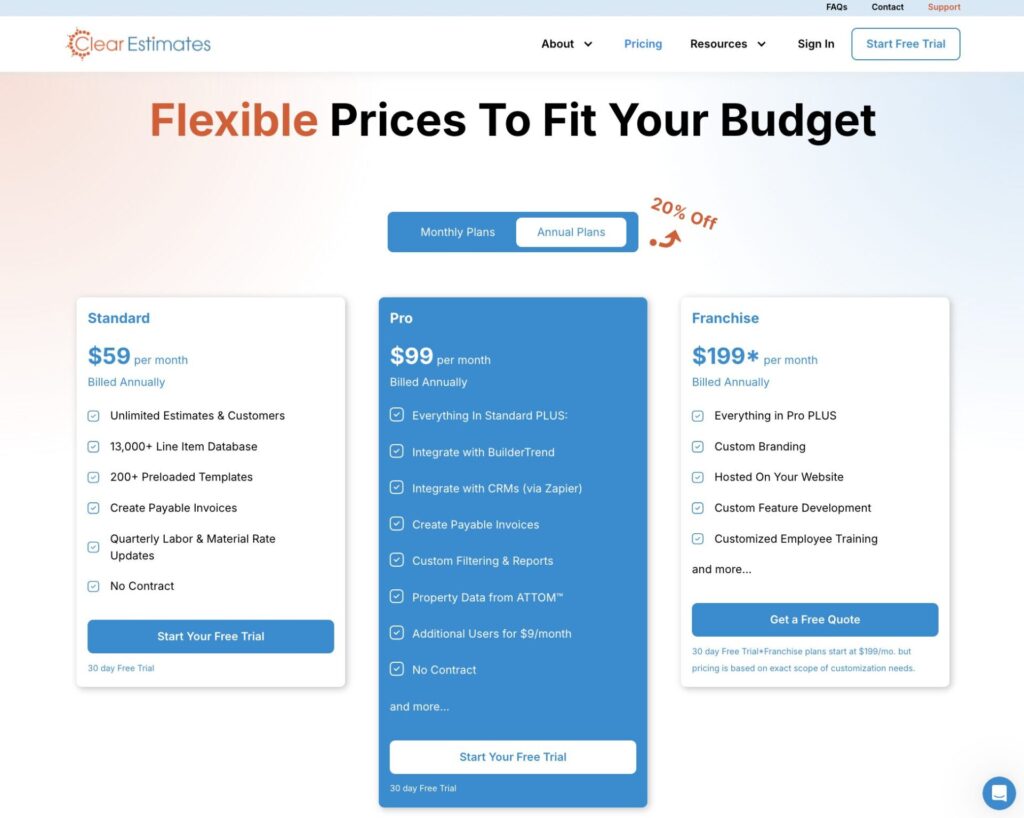
12. eTakeoff
Digital takeoff software with integration capabilities.
eTakeoff is a digital takeoff software focused on precision and customization. Best used in tandem with Sage Estimating (though it can function as a standalone tool), it’s especially popular with commercial and large-scale residential contractors who need accurate measurements, annotations, and integration with deeper estimating workflows. It’s a favorite among estimators who want more control over takeoff detail and structure.
Top Features
- Advanced dimensioning and annotation tools
- Integration with Sage Estimating for full estimating workflows
- Multi-user collaboration with access control
- Pattern search and auto-counting functionality
- Customizable takeoff assemblies
Pros
- Great for contractors who rely on highly detailed takeoffs
- Seamlessly bridges the gap between plans and estimates
- Offers powerful automation for repetitive elements
- Strong support and learning resources
Cons
- Best experience comes when used with Sage Estimating
- Steeper learning curve than simpler takeoff tools
- The interface could use a refresh to feel more modern
Pricing
eTakeoff offers different pricing tiers, starting at $795/user/year for their advanced subscription or $1,495/user/year for their premier subscription. Contact the sales team for current pricing based on your needs.
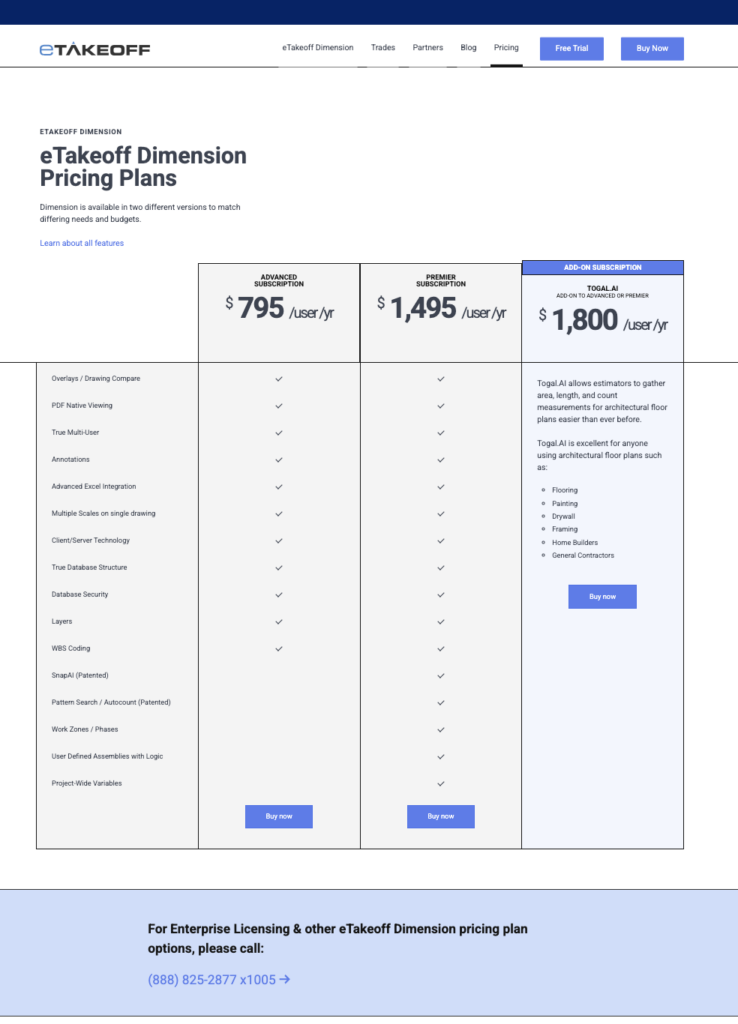
13. Viewpoint Estimating
Comprehensive estimating integrated with project management.
Viewpoint Estimating is part of Trimble’s Viewpoint suite, offering a connected solution for contractors who want their estimates, project management, and accounting all in sync. It’s most valuable for firms already using Viewpoint Vista or Spectrum for back-office operations. With detailed cost modeling and real-time access to project data, it helps estimators reduce manual entry and maintain continuity from bid to billing.
Top Features
- Cost item libraries and reusable estimate templates
- Real-time connection with Viewpoint ERP and project management tools
- Customizable proposal output and reporting
- Multi-user access and permissions
- Integration with takeoff tools for seamless workflows
Pros
- Strong fit for contractors already using other Viewpoint products
- Helps maintain data consistency across departments
- Streamlines handoff between estimating, PM, and accounting
- Excellent support and onboarding resources
Cons
- Not a good fit if you’re not already in the Viewpoint ecosystem
- Interface can feel dated compared to standalone modern tools
- Pricing and access are less flexible for small businesses
Pricing
Viewpoint Estimating offers custom pricing based on modules and business size. You’ll need to contact Trimble directly for a tailored quote or a custom demo.
14. ConEst
Estimating software for electrical and mechanical contractors.
ConEst is a specialty estimating software built for electrical, low-voltage, and mechanical contractors. It combines takeoff tools, labor/material databases, and project tracking features into one cohesive system. Its pre-built assemblies and trade-specific pricing libraries make it a favorite among contractors who need to generate accurate bids quickly while managing complex scopes.
Top Features
- Trade-specific assemblies for electrical, mechanical, and low-voltage
- Integration with takeoff software and accounting systems
- Change order tracking and bid history logs
- Real-time material pricing updates from trade suppliers
- Project management add-ons are available
Pros
- Tailored for MEP contractors—right out of the box
- Cuts down on manual entry with trade-specific libraries
- Easy to track cost fluctuations and update estimates quickly
- Strong support team with industry experience
Cons
- Not for general contractors or non-MEP work
- On-premise versions may not fit remote or hybrid teams
- Requires training to fully leverage the advanced features
Pricing
ConEst offers custom pricing based on licenses, users, and modules. Contact the sales team for a detailed quote or to request a demo.
15. Buildxact
Estimating and job management for small builders.
Buildxact is an estimating and job management platform made for small builders and remodelers who want a streamlined way to manage quoting, scheduling, and budgeting. It’s especially helpful for residential contractors who need to turn around bids quickly without sacrificing professionalism. Buildxact stands out for its clean interface, built-in supplier pricing integrations, and ease of use—even for those new to construction software.
Top Features
- Quote builder with built-in templates and supplier pricing
- Job scheduling with Gantt charts and task assignments
- Simple client portal for quote approvals and communication
- Cost tracking and change order management
- Takeoff tools included (browser-based)
Pros
- Built specifically for small builders and remodelers
- Fast learning curve with great training resources
- Helps eliminate double-entry with supplier and accounting integrations
- Cloud-based and accessible from any device
Cons
- May feel too basic for commercial or multi-crew contractors
- Limited custom reporting features
- Takeoff tools are useful but not as advanced as standalone platforms
Pricing
Buildxact pricing plans start at $133/month for their “Entry” subscription when billed annually (billed annually as $1,596). This price increases for their “Pro” and “Teams” subscriptions, depending on the number of users and features. A free 14-day trial is available to explore the platform before committing.
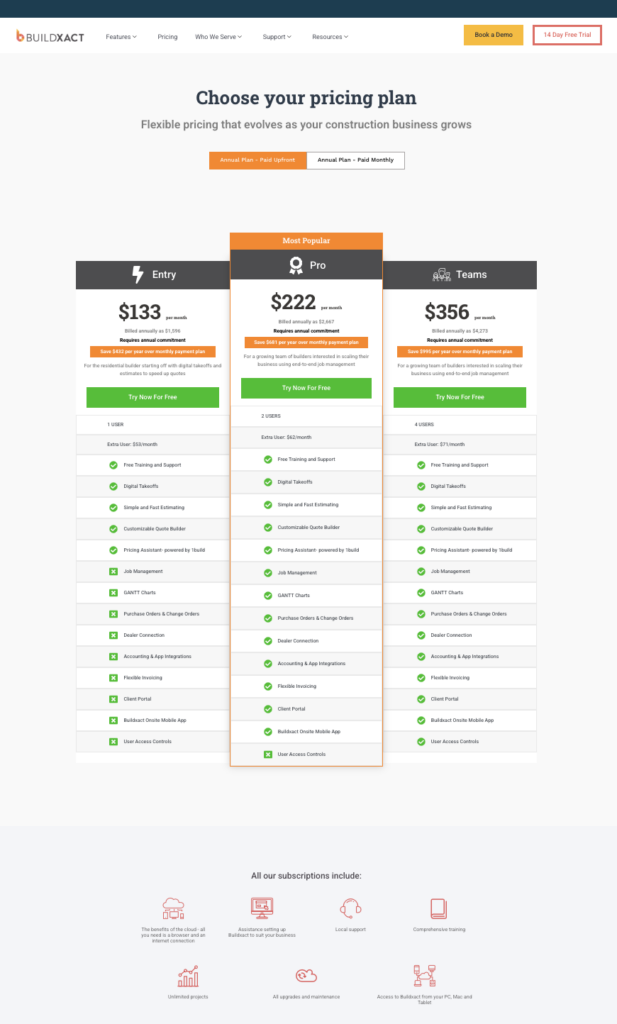
16. PrebuiltML
Takeoff software for framing and lumber estimation.
PrebuiltML is a takeoff software specifically built for framing contractors, lumber estimators, and anyone working with wood-based construction. It focuses on generating accurate cut lists, material orders, and layout plans for framing jobs. The tool is especially useful for companies that want to reduce waste, speed up takeoffs, and improve communication between estimators and suppliers.
Top Features
- Framing-specific takeoff tools and material breakdowns
- Auto-calculated cut logic and optimized material lists
- Supplier integration for real-time material pricing
- 3D model viewer for visualizing framing layouts
- Exports compatible with saws and jobsite labeling systems
Pros
- Extremely accurate for wood framing and lumber takeoffs
- Helps reduce waste and over-ordering
- Tailored outputs for saw optimization and builder workflows
- Ideal for homebuilders, lumberyards, and component manufacturers
Cons
- Limited use outside of wood framing or light construction
- Not a full estimating solution—best paired with other tools
- Smaller user base, so fewer community resources available
Pricing
PrebuiltML X pricing is based on user type and needs. PrebuiltML offers two core products: PrebuiltML X and PROtrade. X2 starts at $75/month (billed annually) and X3 starts at $99/month (billed annually). A free trial and free demo are also available.


17. Quick Bid
Estimating software for specialty contractors.
Quick Bid, part of ConstructConnect’s portfolio, is a legacy estimating tool commonly used by specialty contractors, especially in fields like drywall, flooring, painting, and finishes. It provides detailed labor and material cost tracking, integrates with digital takeoff tools like On-Screen Takeoff, and supports detailed bid preparation for subcontractors working under tight deadlines.
Top Features
- Detailed cost item tracking (labor, materials, equipment)
- Integration with On-Screen Takeoff for seamless workflows
- Bid adjustments for profit, labor burden, and overhead
- Subcontractor-focused proposal tools
- Built-in pricing databases for specialty trades
Pros
- Trusted by trade contractors for decades
- Works well with ConstructConnect’s broader tool suite
- Strong cost-tracking and mark-up tools
- Great for repeatable bid workflows
Cons
- Outdated user interface compared to newer software
- Not cloud-based—runs as a desktop application
- May not scale well for large teams or general contractors
- Limited innovation in recent years
Pricing
For pricing, contact the Quick Bid sales team for a detailed quote or try a 14-day free trial.
18. Esticom (Now part of Procore)
Fast, cloud-based estimating built for specialty contractors.
Esticom is a cloud-based takeoff and estimating platform originally for small to mid-sized specialty contractors. Since being acquired by Procore, it has become part of their preconstruction suite. Esticom simplifies the bid process with intuitive takeoff tools, cost databases, and proposal templates, making it especially appealing for electrical, HVAC, and plumbing contractors who want a lightweight but powerful estimating tool.
Top Features
- Web-based takeoff and estimating in one platform
- Trade-specific assemblies and cost databases
- Easy quote and proposal creation
- Integrates with Procore’s project management suite
- Speed and ease of use
Pros
- Great for trade contractors who need quick, accurate bids
- Intuitive UI with minimal training required
- Cloud-based access from anywhere
- Now benefits from Procore’s ecosystem and support
Cons
- Limited customization compared to enterprise-level tools
- Still growing its feature set post-acquisition
- Best for simple-to-moderate scope bids—may lack depth for large jobs
Pricing
Esticom’s pricing is quote-based. Expect monthly or annual plans, with costs influenced by user count and feature access. Now available through Procore’s sales team.
The Future of Construction Estimating & Bidding Software: Key Market Insights
Construction tech is evolving fast—and bidding software is right in the middle of that momentum. Here’s a look at where the market is heading, what’s shaping buying decisions, and how contractors are adapting.
Free Versions Are Rare (and Limited)
If you’re looking for a free, fully-featured bidding tool, you may be searching for a unicorn.. Among the top contenders, only STACK and eTakeoff offer limited free options.
That tells us one thing loud and clear: quality bidding software almost always comes with a price tag. And honestly, it should. The value these platforms deliver in time saved, errors avoided, and projects won typically far outweighs the upfront cost.
Tools Are Getting More Specialized
The market now offers two paths: all-in-one construction management platforms like Procore and BuilderTrend that include bidding as one piece of the puzzle, or dedicated tools like PlanSwift and B2W that go deep on just bidding and estimating.
The right choice depends on your workflow—whether you want to centralize everything in one system or keep best-in-class tools for each phase.
However, as we look forward, tools are becoming more specialized. Platforms are now catering to specific construction niches—think residential remodelers, heavy civil contractors, or MEP subs.
This specialization means more relevant features, fewer workarounds, and software that actually fits the way your team works. It’s all about depth over generalization.
Cloud-Based Tools Are the New Norm
The market’s moving to the cloud—quickly. Newer platforms are launching as cloud-native, and even older tools are racing to modernize.
Why? Cloud-based systems make it easier to collaborate across teams, access live data, and keep your estimates and documents in one secure, centralized place. It’s not just more convenient—it’s become the expectation.
Integrations Matter—A Lot
No one wants yet another tool that doesn’t talk to the rest of their tech stack. The top-rated bidding software options play well with project management platforms, accounting systems, and field operations tools.
These integrations reduce double data entry, speed up workflows, and help teams stay aligned from bid to closeout.
Mobile Functionality Is a Must-Have
As more firms prioritize agility and real-time communication, software that fully embraces mobile access is climbing to the top of buyers’ lists. Apps and mobile-optimized platforms are making it easier to update estimates, review plans, or communicate with the office—right from the jobsite.
Moreover, true mobile functionality means field crews can do more with less friction—edit proposals, share markups, and collaborate in real time.
If your team’s not tied to a desk, your software shouldn’t be either.
AI Is Starting to Make an Impact
Some platforms are beginning to tap into AI and machine learning to make estimating smarter. From automating takeoffs to analyzing past projects for optimized pricing, these features are still emerging—but they’re moving fast.
As AI gets better, expect bidding tools to not just speed up the process, but actively help teams build better, more profitable bids by giving you smarter suggestions, fewer manual steps, and better visibility into where your estimates stand.
Remember, it’s not about replacing people—it’s about helping teams get more done in less time.
Choosing the Right Tool—and Making It Work Better with OpenAsset
As we’ve seen, construction bidding software has come a long way—from digitizing takeoffs to streamlining how teams build, track, and submit proposals. But even the best bidding software can only take you so far if your marketing assets are scattered across folders, drives, and inboxes.
However, with the right DAM solution tailored to the AEC industry, like OpenAsset, it’s now easier than ever to store and find your firm’s digital assets through a centralized platform. This means your team can quickly build polished, on-brand proposals using the content you’ve already created.
So once you’ve chosen the best bidding software for your workflow, pair it with a system that makes it even more powerful.
Ready to see how OpenAsset can help your AEC firm save time, respond to RFPs faster, and win more business?


